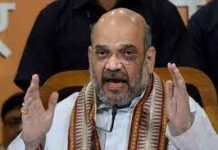 South-West Monsoon is in full bloom in most parts of India. An initial phase of anxiety about deficit monsoon has subsided and rainfall is expected to be normal. The four months — June, July, August and September — receive 70 per cent of annual rainfall of the country and any deviation from normal is painful. A lifeline for the rural population, monsoon has a multiplier effect on all sectors of the economy. Though monsoon has taken almost entire country in its fold, the unpredictable weather God is over generous at some places. The state of Kerala has been facing a fierce flood fury. Many districts in the state have been submerged in water and several people (167 dead till this report was filed) have lost their lives. Relief and rescue operation may provide an immediate succor but the extensive damage caused to public and private property inter alia may derail the lives of the people.
South-West Monsoon is in full bloom in most parts of India. An initial phase of anxiety about deficit monsoon has subsided and rainfall is expected to be normal. The four months — June, July, August and September — receive 70 per cent of annual rainfall of the country and any deviation from normal is painful. A lifeline for the rural population, monsoon has a multiplier effect on all sectors of the economy. Though monsoon has taken almost entire country in its fold, the unpredictable weather God is over generous at some places. The state of Kerala has been facing a fierce flood fury. Many districts in the state have been submerged in water and several people (167 dead till this report was filed) have lost their lives. Relief and rescue operation may provide an immediate succor but the extensive damage caused to public and private property inter alia may derail the lives of the people.
Cloudbursts and landslides in the state of Himachal Pradesh, Uttarakhand and Leh in Jammu and Kashmir have been reported. Amidst the reports of chaos and misery, the revival of
monsoon has restored the hopes of a good kharif crop.
Kharif crops constitute a major proportion of food grains production in India for crops like Paddy, Cotton, Sugarcane, Maize, Moong, Millets (Jowar and Bajra), Groundnuts, Soyabean and Chilies are grown in this season. Of the total cropped area in the country, approximately 65 per cent of the net sown area comes under rain fed crops. India ranks first among the rain fed countries in the world in terms of area but performs poor in the rain fed yield (less than 1 tonne per hectare).
According to Niti Ayog, of the total pulses, oilseeds and cotton produced in the country-80 per cent pulses, 73 per cent oil seeds and 68 per cent cotton come from rain-fed agriculture.
The Economic Survey of year 2017-18 projected the annual growth of agriculture sector at 2.1 per cent, lagging miserably behind industry (4.4 per cent) and services(8.3 per cent). The economists endorse that almost 52 per cent of the cropped area in India remains without irrigation and some areas are chronically water stressed. The share of canal in net-irrigated area has declined from 39.8 per cent to 23.6 per cent and at the same time, underground sources have increased from 29.7 per cent to 62.4 per cent between 1950-51 to 2012-13. This describes the increasing dependence of farmers on rain-fed agriculture.
A good monsoon not only irrigates the field crops but also fills the reservoirs for the rabi crops and recharges the underground water. According to Central Groundwater Board, the ground water situation in the states of Ahdhra Pradesh, Gujarat, Haryana, Karnataka, Punjab, Rajasthan, Tamilnadu and Telengana has reached a critical level. The monsoon plays a vital role in recharge and replenish of underground water.
Monsoon rains are essential, not only for agriculture but for the economy of the country as a whole. Timely arrival of monsoon and equitable distribution of rain ensure the income generation in hinterland and adequate availability of raw material for the textile and food
processing industry.
Rural sector has tangible effects of monsoon but its intangible effects are all pervasive — from business, economy, and policy making to politics. The monsoon may not have any direct bearing on poll outcome but it plays a vital role in the penultimate election year; particularly in a country like India where the largest section of voter hails from agricultural backdrop.
The recent announcement about the revision of Minimum Support Price of the 14 kharif crops may bear fruit only if the rainfall is adequate. The ruling NDA alliance has evidently played a political card by substantially revising the MSP of crops and the procurement agencies have also been given an indication to pull up the socks. An elusive monsoon, at this juncture may smash the hopes of the ruling Bharatiya Janata Party and its partners. If the monsoon remains consistent, this will propel sentiments on all fronts. Earlier this year, backed by the prediction of Indian Meteorological Department (IMD) of a normal rainfall this season (June to September 2018), the Union Ministry of Agriculture has set a tentative target of 283.7 MT of food grain production for next year. This indicates a 4MT increase from 279.51 MT (the third advanced estimate of country’s food grain production for the crop year July 2017-June 2018). The Union Agriculture Minister Radha Mohan Singh had
informed that the country was able to save 9,775 cr in foreign exchange with the help of record output of pulses.
A good monsoon, coupled with perfect market conditions and proper implementation of farmer welfare schemes are the necessary ingredients for actual well-being of the farmers and prosperity of the nation.
The acute agricultural distress, farmers’ unrest, growing number of farmers’ suicides in the country may abate for some time in the wake of favorable climate conditions.
According to the sources in Meteorological Department, a rainfall deficit of up to 19 per cent is considered normal presuming the standard deviation and error due to a large area under rain. He told that reservoirs at most of the places were filled up to the capacity and there are few more weeks to go, so there is no need to worry.
Whether floods or draughts, political parties explore the silver lining in every situation. If monsoon is conducive, perceptions are positive, businesses are up and the ruling parties take the credit of framing suitable policies and woo the voters. On the flip side, a deficit monsoon may also turn the tide in their favour by announcing doles and financial stimulus packages to gratify voters.
The former Governor of Reserve Bank of India D Subbarao had said that RBI chases the monsoon like millions of farmers in the country as monsoon performance is an important factor in determining the RBI policies. The food inflation is directly related to a good harvest and a good harvest ensures moderate rate of inflation to sustain the desirable growth rate in the economy.
For Corporate sector, there are more than one benefits of normal rain. On one hand good rains spur the production-keeping price of inputs in control; at the same time it invigorates the demand in rural and semi-urban areas. A good cotton crop this year may revitalise the textile sector (ginning and spinning) as the demand of cotton in global market (especially from China) is expected to be high, informed a Gujarat based trader. This will enable the mills to run at full capacity thus cutting average cost of production along with higher employment generation.
The corporate sector is also busy drawing up plans to cash in good monsoon. The automobile manufacturers (two wheelers, tractors), agriculture implements, fertilisers, FMCG, tourism and hospitality all are keeping their hopes high post the revival of monsoon.
The banking sector of the country, that is under an appalling fund crunch due to colossal NPAs in general and debt waivers announced for the agriculture sector in particular also feels the pinch of any discrepancy in monsoon. The good monsoon translates into credit expansion and smooth repayment and vice-versa.
Monsoon is the single common factor in the life of every individual Indian and every interest group. Every citizen of the country stands to gain from monsoon rain but its richest dividends would be reaped by the incumbent government in the penultimate year of general elections.
letters@tehelka.com












